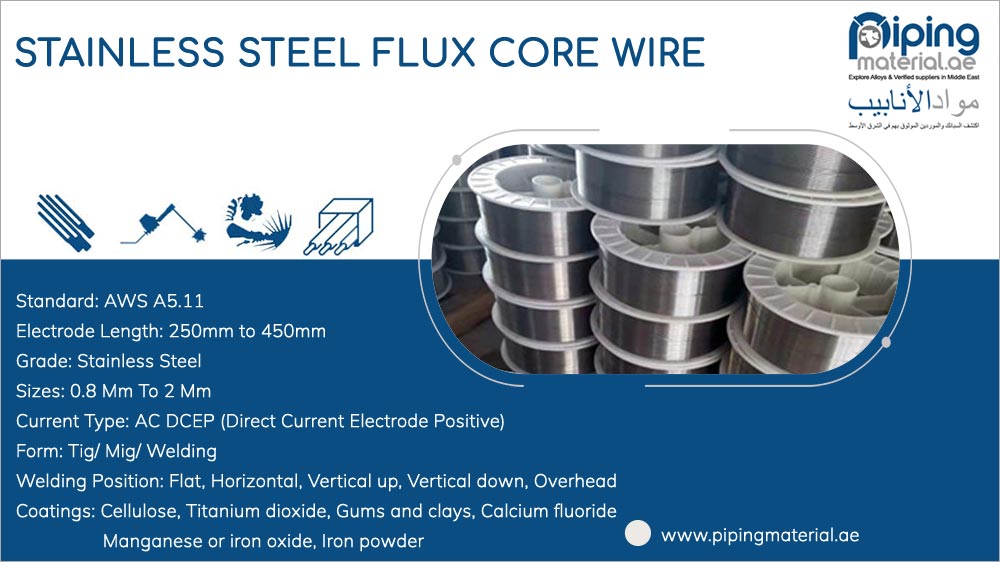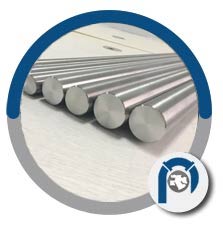Exploring the Marvels of Titanium Welding Rods and Stainless Steel Flux Core Wires

Welding is a critical process in the manufacturing and construction industries, providing the means to join metals together efficiently and securely. In recent years, there have been significant advancements in welding materials and techniques, with two notable innovations being Titanium welding rods and Stainless Steel flux core wires. Let's delve into the world of these remarkable welding materials and understand their applications, benefits, and challenges.

Titanium Welding Rods: Unveiling the Strength of the Light
Titanium is a unique metal renowned for its exceptional strength-to-weight ratio, corrosion resistance, and biocompatibility. These properties make it a preferred choice in various industries, including aerospace, medical, marine, and sports equipment manufacturing. However, welding titanium can be a challenging task due to its high reactivity with atmospheric gases, such as oxygen, nitrogen, and hydrogen, which can cause contamination and weaken the welds.
Titanium welding rods are specifically designed to address these challenges. These rods are usually made of pure titanium or titanium alloys, and they come in various grades, each tailored to specific applications. Some of the common titanium grades used in welding are Grade 1 (pure titanium), Grade 2 (commercially pure titanium), and Grade 5 (Ti-6Al-4V, a popular titanium alloy).
Benefits of Titanium Welding Rods:
- Corrosion Resistance:Welds made with titanium rods exhibit exceptional resistance to corrosion, making them ideal for applications in harsh environments or where contact with corrosive substances is expected.
- Strength and Lightweight:Welded titanium structures retain the metal's inherent strength while maintaining a low weight, which is particularly advantageous in aerospace and automotive industries.
- Biocompatibility:Titanium is biocompatible and is often used in medical implants. Welds made with titanium rods ensure the welds are also biocompatible, making them safe for medical applications.
- Heat Resistance:Titanium welding rods have excellent heat resistance, allowing them to withstand high temperatures without compromising their integrity.
Challenges of Titanium Welding Rods:
- Sensitive to Contamination:As mentioned earlier, titanium is highly sensitive to contamination during the welding process, so strict measures must be taken to prevent exposure to atmospheric gases.
- High Cost:Titanium is an expensive material, and welding rods made from it are generally more costly than conventional welding materials.
- Specialized Equipment and Techniques:Welding titanium requires specialized equipment and techniques, adding to the complexity of the welding process.
Stainless Steel Flux Core Wires: The Powerhouse of Versatility
Traditionally, stainless steel welding has been performed using shielded metal arc welding (SMAW) or gas metal arc welding (GMAW) with solid wires and shielding gas. However, the emergence of Stainless Steel flux core wires has brought significant advancements to the welding process.
Stainless Steel flux core wires are tubular wires with a hollow core filled with fluxing agents. When the wire is melted during welding, the flux forms a protective shield over the weld pool, preventing it from atmospheric contamination. This eliminates the need for external shielding gas, making flux core welding more versatile and suitable for outdoor applications.

Benefits of Stainless Steel Flux Core Wires:
- All-Position Welding:Flux core wires offer excellent weldability in all positions, including vertical and overhead, providing more flexibility in welding operations.
- Increased Productivity:The absence of the need for external shielding gas reduces setup time, leading to increased productivity and cost-effectiveness.
- Welding Outdoors:Flux core welding is particularly useful in outdoor and windy conditions where using shielding gas can be challenging.
- Penetration and Spatter Control:Flux core wires provide deeper penetration into the base metal, resulting in stronger welds. Additionally, they help control spatter during the welding process.
Challenges of Stainless Steel Flux Core Wires:
- Slag Removal:After welding with flux core wires, slag removal is required, which can be time-consuming and labor-intensive.
- Post-weld Cleaning:The flux residue left after welding must be cleaned thoroughly to maintain the integrity and appearance of the weld.
- Potential Porosity:If not used correctly, flux core wires can lead to porosity in the welds, compromising their strength and quality.
In conclusion, both Titanium welding rods and Stainless Steel flux core wires have revolutionized the welding industry by offering unique properties and advantages. Titanium rods provide high-strength, lightweight, and corrosion-resistant welds, making them invaluable in critical applications. On the other hand, Stainless Steel flux core wires offer versatility, increased productivity, and better performance in outdoor welding scenarios.
As technology continues to advance, we can expect even more improvements in welding materials and techniques, further enhancing the quality and efficiency of welding processes across various industries. Whether you're building aircraft, constructing skyscrapers, or fabricating medical devices, these innovations in welding materials empower engineers and welders to create stronger, safer, and more reliable structures and products.
TAGS :
RECOMMENDED FOR YOU
What are the advantages of the best infant car seats?
July 20, 2024









